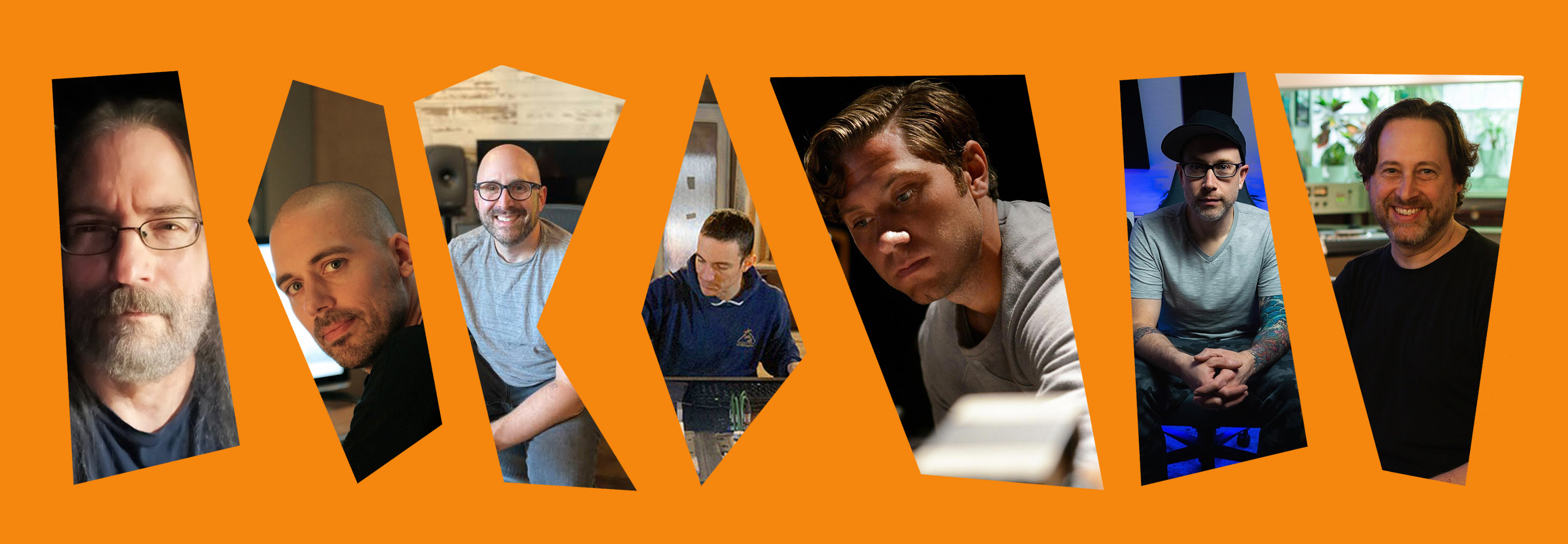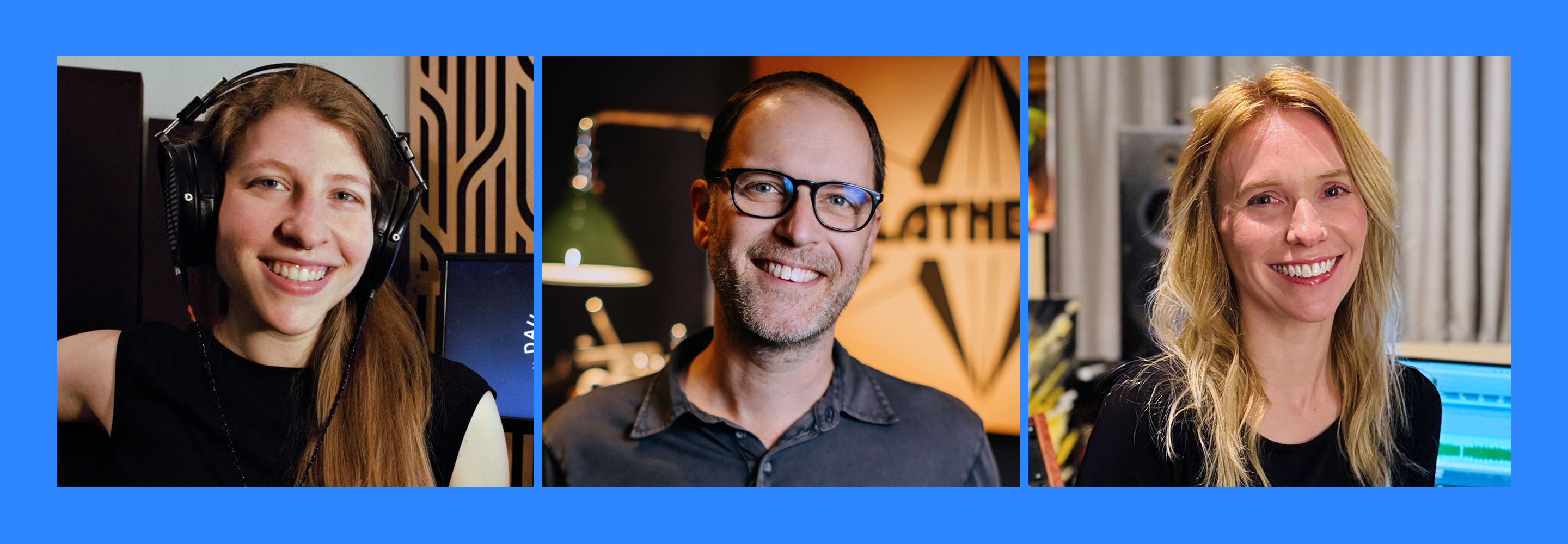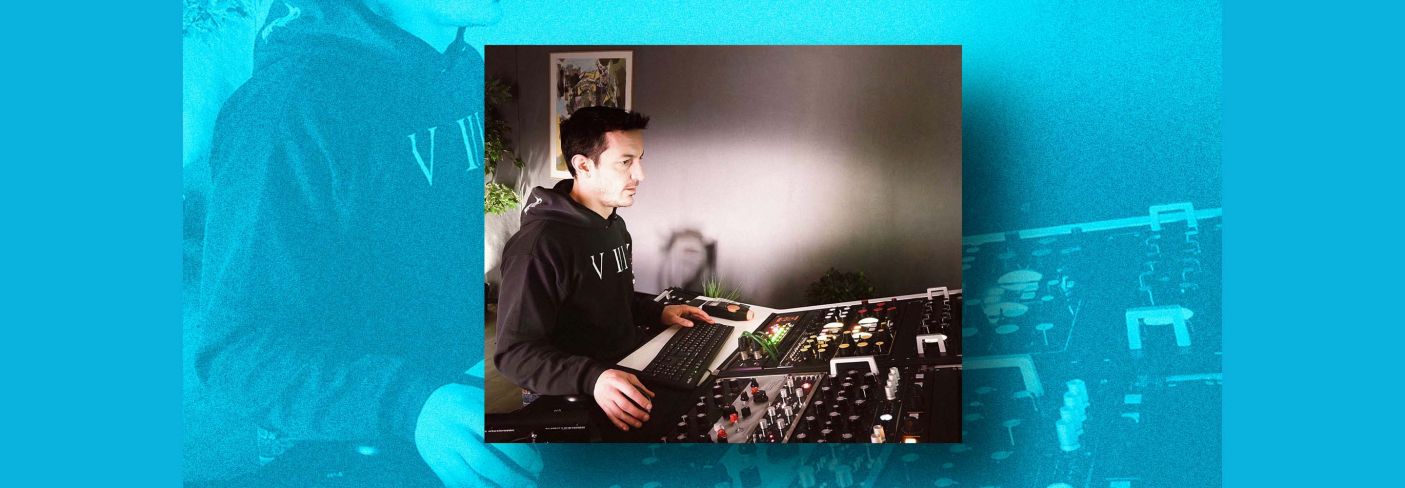
Bob Macciochi: The art, workflow, and business of mastering
Get advice on mastering from renowned engineer Bob Macciochi. Discover his insights on monitoring, honing your instincts, and using key tools to build a lasting career in audio.
I recently had the pleasure of sitting down with one of my favorite mastering engineers, Bob Macciochi, also known as Macc. His work is all over the electronic music coming out of England over the last twenty years. If you’re one of the millions who has streamed this song on YouTube or Spotify, then you’ve definitely heard his masterful work.
Macc is a pleasure to speak with, and I always learn something new from his insightful, good-natured tangents. In this piece, we’ll explore a wide range of topics, so if you're curious about the craft, workflow, and business behind professional mastering, you've come to the right place.
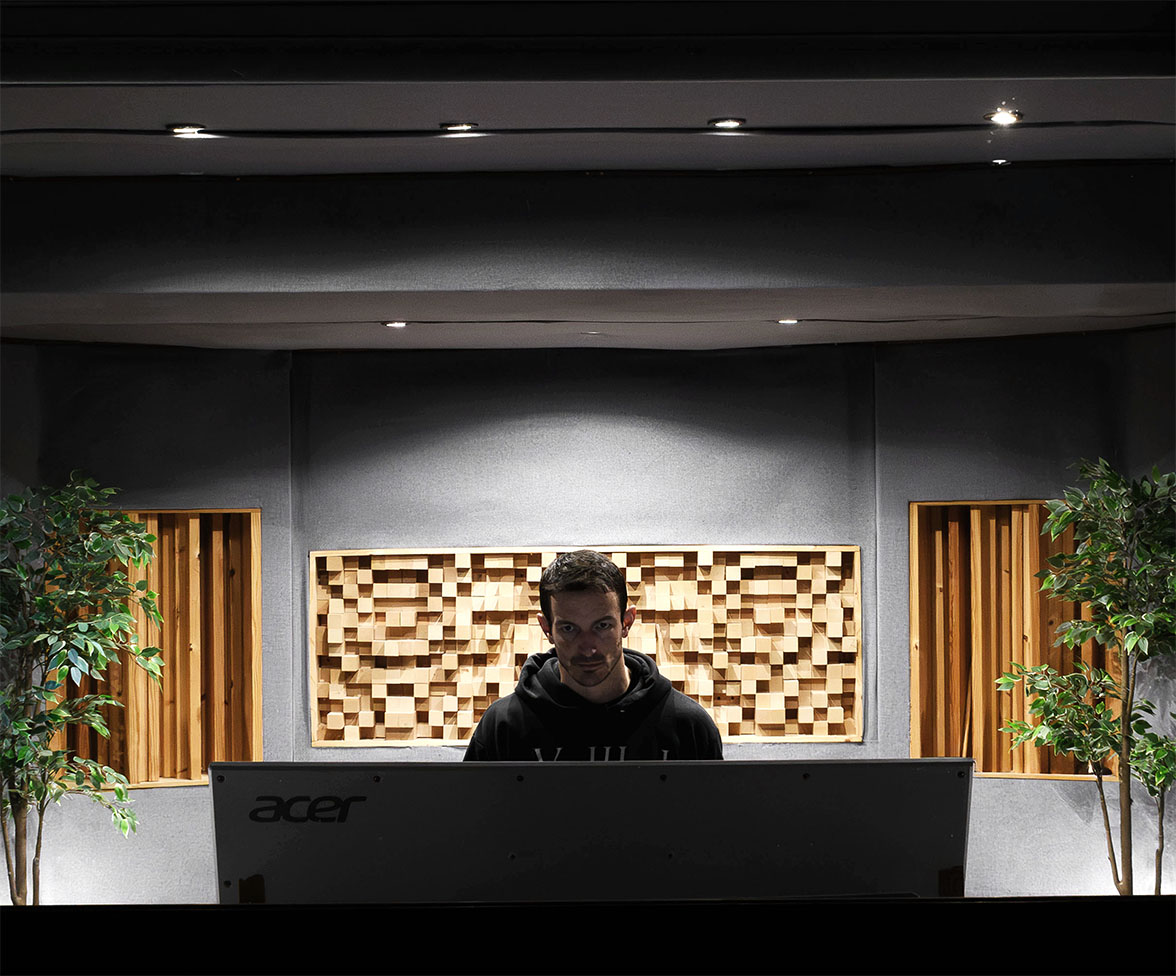
Bob Macciochi
On monitoring in mastering
Right off the bat, I asked Macc his top advice for people who want to go pro. He stressed the importance of great, reliable monitoring.
“Monitoring is number one,” he told me. “That’s the thing: Monitoring is number one.”
Indeed, the job gets so much easier if you’ve got monitoring you can trust – and this applies to both headphone practitioners and those with dedicated rooms.
On using headphones in mastering
Macc actually got his start working on headphones in the early 2000s. “I lucked out on a gig,” he told me. “I should say his name: Dev Paradox. I owe that geezer everything – he launched me.”
When he took the gig, Macc found himself confronted with an issue many of us can appreciate:
“I didn't really have speakers that I trusted a great deal,” he said. “and keep in mind, this was 25 years ago, when no one knew shit about shit (nowadays everyone knows everything about everything) but I did know a little – a very little – about acoustics.”
Indeed, having graduated university with a degree in physics, he had learned enough about the physical propagation of sound to understand an essential truth about his situation:
“My room was terrible – like a nightmare.”
So he made the choice that best suited his situation: he became one of the first to publicly work on headphones. “I just went all in, committed to it, and bought the best headphones I could afford and stuck with it.”
He spent “every hour under the sun” working in those headphones. “I listened to as much stuff as I possibly could.”
As one of the earlier engineers to publicly embrace headphones, he experienced the stigma of working with cans first hand. “I got ridiculed by quite a few people who I don't hear from anymore,” he said. “So, that's all I'm saying about that.”
Macc stresses that these days, working in headphones is much better than it used to be: “these days you've got such a leg up with things like Sonarworks and custom curves for all the headphones. And headphones themselves have come on leaps and bounds and all that kind of thing. So, it can be done.”
On speakers in mastering
But eventually, Macc brought in enough of a clientele to merit investing in a proper room with proper speakers (these days he uses a set of Kiis).
If you are a headphone practitioner, and you get good at what you do, the same transformation may be in your own future – and this can come with its own set of problems.
“I struggled to go back to speakers once I got a room that was worthy of it,” he told me.
He stressed that listening with speakers after spending years on headphones is “such a different way of listening to things. You can use cross-feed and you can do all that – I get all that – but it's just a different way of listening.”
The only remedy for this issue is to power through. “It’s like getting new ears,” he said.
On honing your instincts
We’ll get into Macc’s particular workflow in a second, but to the person looking to go pro, he has this to say:
“The most precious thing about this work is the initial instinct. The first two seconds – max. You hit play, you're like, ‘that's not right.’ And if you fix that one thing there, then you'll be in good shape. You'll get like 80% of the way there, if you can fix that one or two things.”
Macc stresses that “it's about answering the right questions,” because working too slowly brings you into the realm of diminishing returns: “the longer you go past that – the longer you take, the more you lose that original instinct. The faster you can act on that, the better off you are.”
It’s about being able to associate the problem you’re hearing with the technical solution as quickly as possible – “to know your tools and also to trust what you hear in order to follow that instinct quickly.”
As for the tools? “The tools are sort of ‘by the by,’” Macc said, “although usually, it’s EQ.”
So what tips does Macc have for honing your instincts – for forging the connection between your first instinct and your first move?
“One might tend to develop their own vocabulary of expressing that instinct I mentioned,” he said. He gave two examples: the adjectives “pokey” and “shrill.
He carefully defines what the difference is for him. “Pokey's dynamic stuff at 2 to 4 kHz,” whereas, “shrill is more sustained stuff at say 3 kHz.”
The goal is to associate each term with both a sound in your mind and a tool in your arsenal.
“Everyone's vocabulary is different,” he said. “But it’s being able to develop how to shorten the distance between your ears and your hands – so I've always found vocabulary quite helpful like that. You know, it's scratchy? That’s probably 5 or 6 kHz. It's just irritating me? That’s probably 1.2 kHz.”
He stresses that “it’s such a bizarre job that we do,” where a subjective audio term “usually has a direct technical [solution].”
Learning how to associate the problem at hand with the right tool will make you work faster, smarter, and more economically. You might hear “wooly” and think “Ozone Low-End focus, smooth setting, just a touch between 100 and 200 Hz.”
Indeed, you might find yourself making presets to make the work faster – and this is not something to run from.
“Once you've got those things established – your methods established and ways of doing it and the right tools or whatever – you can just chuck them on there.”
In other words, you’ll be making your own presets.
“You'll have to develop your own presets,” he said. “There's nothing wrong with presets,” provided you have your own association with them, and know exactly what they’re doing.
“The most precious thing about this work is the initial instinct. The first two seconds – max. You hit play, you're like, ‘that's not right.’ And if you fix that one thing there, then you'll be in good shape. You'll get like 80% of the way there, if you can fix that one or two things.”
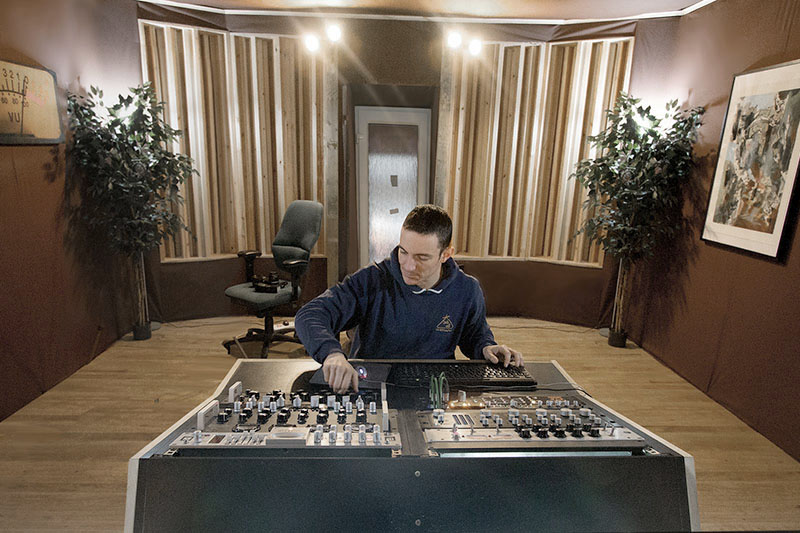
On mastering workflow
Moving to workflow, I asked Macc about the first thing he does when he gets an album or compilation to master.
“Normalize everything to the same loudness level,” he told me, “which I used to do by hand – that took ages – and now I just normalize it by LUFS. LUFS is a bit shit, but it'll do.”
“Make sure you put that bit in,” he emphasizes, “LUFs just a bit shit, but it'll do.
Then, he further adjusts “everything so it sounds on the same level. 'Cause if you get, say, a various artist 10-track LP, God only knows what they're doing.”
After that, it’s back to his instincts:
“I will attack and I will act on instinct as quickly as possible,” he said. “I’ll work through the whole thing as quickly as possible.” He’s quick to say that he’s not “rushing, you know. It's just promptly and smoothly working through the whole thing and making the right decision as quickly as possible for a given problem.”
The sign of a good day, he says, is “it's just happening. You know, my hand reaches this control. It could be analog. I could reach for a plugin. I don't know. It's just all happening.”
These days, Macc has a lot of digitally-controlled analog gear – hardware that can be recalled with the click of a mouse. So, if wants to, he “can put that on every track and EQ each track manually, you know, in analog because I'm just an analog person generally speaking.”
On a good day, he can “work with plugins and analog to get each track so that I can basically hit record for the whole album and walk away.”
That’s not to say that every project goes smoothly – or doesn’t come with its own set of issues. He stresses that compilations are “quite different from, say, the same person, where they’ve probably got the same acoustic issues in their room.”
In essence, “You always have to be answering a question about any project: what's general, and what’s specific? What applies to the whole thing, overall? Is it all too bright, or is it all too ‘whatever?’” This has to be weighed against what’s specific to particular tunes.
Once everything is printed, he’ll have himself a post-analog session, applying smaller changes wherever they need to happen. Usually he’ll do this in a separate Reaper session.
“I tend to do everything in two sessions,” he said, “which makes it take a bit longer, but it means I can hear it fresh again and be like, ‘Oh man, why did I do that?’”
As for limiting, Macc tries to approach this end-stage process “with the same limiter if I possibly can. But I’ll have automation. I’ve got a few Reaper shortcuts, so I can decide which are the key parameters that might need to change per song. And then I’ll draw automation for every song and I can just grab the little line and move it up and down.”
One has to be careful, however, because changing lookahead parameters in real time can cause issues with Zipper noise.
Once the initial stuff is one and dusted, it’s on to the quality control process.
“If I have any suspicions about a project, particularly very loud stuff – or stuff where you’re right on the edge – I’ll look in a spectral editor. Certain parts of the intro might distort a little bit or crack if you’re not careful, or you just miss it ’cause you were moving too fast. So I’ll look at those intros in a spectral editor and make sure everything’s clean. Then I can go, ‘Right, I can go now.’ And then it’s good and home.”
On his favorite iZotope tools
With workflow questions out of the way, I asked Macc about his favorite iZotope tools.
He mentioned Ozone’s Low End Focus module, which he likes for “de-woolifying stuff.”
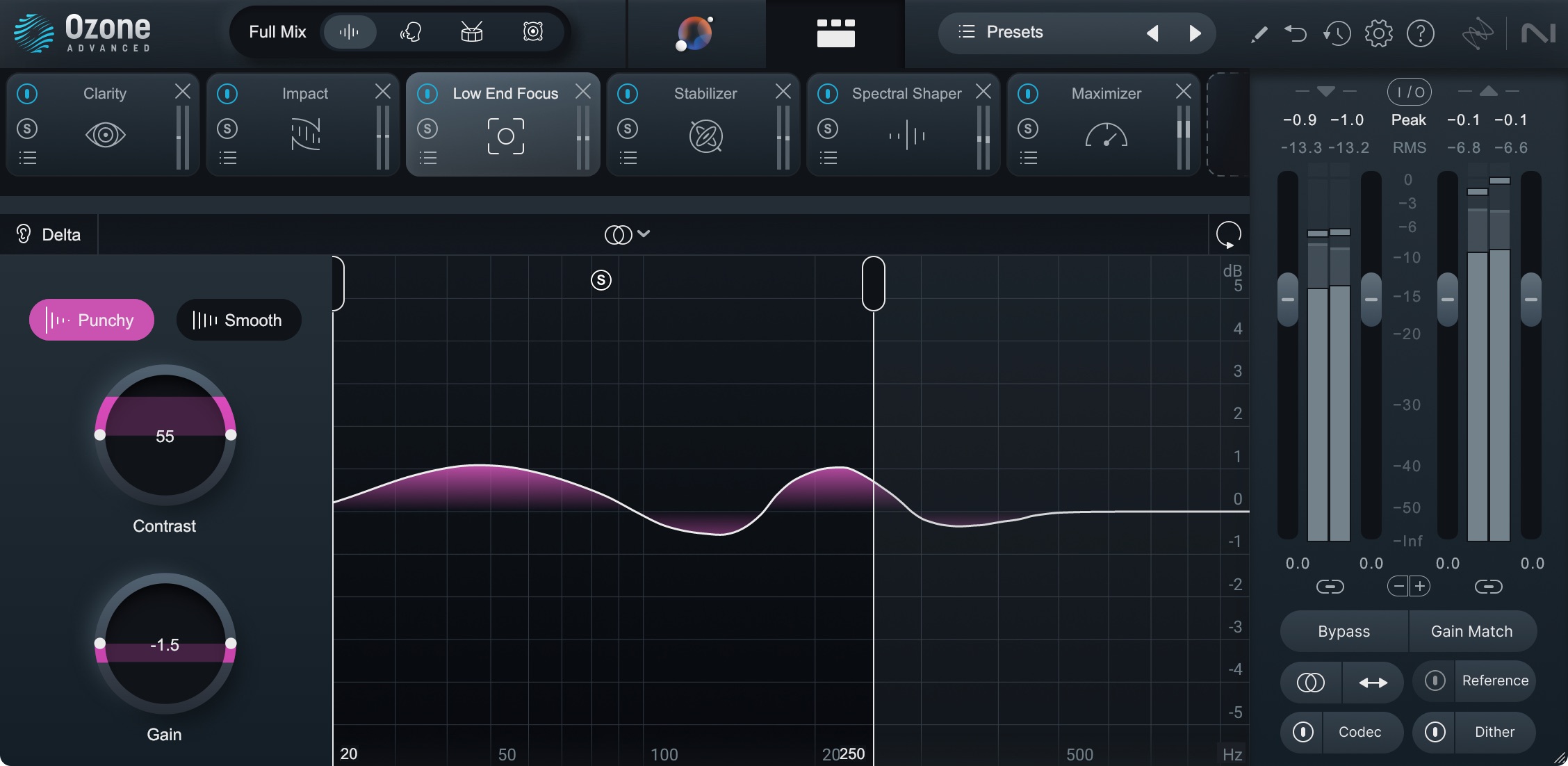
Low End Focus in Ozone
He defines wooly as “indistinct and under dynamic between 80 to 200 Hz – especially these days where you have to saturate everything.”
With engineers quick to turn to saturation, “you end up with harmonics piled up right through that 100 to 200 area.”
Because modern engineers often compress and sidechain to extremes, “there's no space. It's just FRRRRRRRRRRRR.”
“Say the bass is moving around a bit, and the kick is there, but there’s no separation.” Conventional tools like Dynamic EQ can help, but they have to be specifically tuned to the frequency problems at hand. If the bass is moving around a lot, that’s when you bring in a tool like Low End Focus.
“It’s quite good when you've got harmonics moving around under the kick. It sort of knows what's going on, and is fairly precise about it, but you have to be very gentle with it, and you have to use the smooth setting.”
He also likes Ozone’s Imager – though not for widening, per se.
“Not all that often,” he says “get a mix that’s much too wide – you know, when it's beyond the speakers” Here he uses the features in the Imager to “restore the mono content from the sides and so on, you know, recover it, however you want to put it.”
As the Imager has four separate bands, it gives you “a good amount of control over bringing stuff back – and also, crucially, it's got the amount [slider] at the top, which a lot of plugins could do with. So you know, you can just get it working and then bring that right down to like, you know, 8% or 12% or whatever – so I can't hear it doing anything, but it's not so diffuse anymore.”
Macc’s final word
Macc has seen the mastering industry shift dramatically since he began his career – when everything moved to streaming, and five-dollar mastering engineers were popping up everywhere.
What kept him afloat through all of this wasn’t gimmicks or hype – it was commitment to the work. “I’m still here and a lot of those people aren’t,” he said to me. “But I only did that by working my ass off and absolutely committing to the tune in front of me.”
In fact, “that's the only advice I really have: don't worry about anything else other than the tune or the EP or the album. It really comes down to that one tune in front of you. And if you put absolutely everything into that – and you do a good job with that – they will come back. And when they come back, they send their friends.”
It may seem like the field is getting narrower, but it isn’t. “There are more people making music than ever before. And they need to learn – or need to be shown – the value of top-quality mastering.”
So, in a world full of noise – algorithms, trends, and endless unsolicited advice – Let Macc’s perspective serve as a reminder: the best way to build a lasting career in audio is simple: do the best work you can do, every time, and the work will follow.
